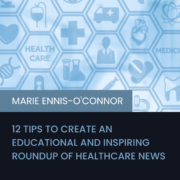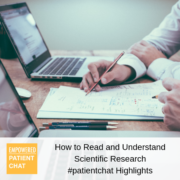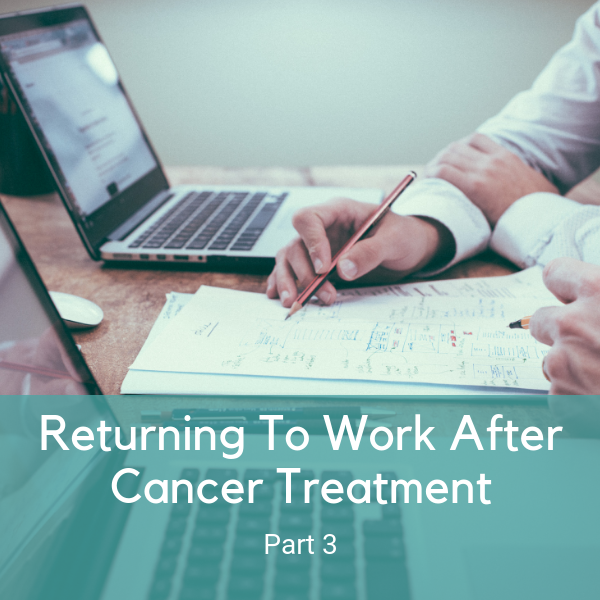12 Tips to Create an Educational and Inspiring Roundup of Healthcare News
Staying current with healthcare news is essential for patient advocates. However, the sheer volume of information available can be overwhelming. It can be challenging to sift through all the noise to find the most relevant and important news.
A healthcare newsletter or roundup can be really helpful here. Resources like these curate the most relevant and impactful healthcare news, usually by topic. They can help your readers stay informed about the latest scientific breakthroughs, research, and policy developments without having to spend hours scouring the internet for information.
With a well-crafted news roundup, you can build trust and credibility within your community, while also positioning yourself as a reliable source of healthcare news. In this post, I’ll share some best practices for creating a regular roundup of healthcare news that educates, informs, and inspires your readers.
1. Gather Your News
Before creating your roundup, you first need to gather the news. Throughout the week, make a note of healthcare stories you come across. It could be breaking news, new research, or policy changes. You can subscribe to Google Alerts to get notified when new articles are published on a specific topic.
2. Prioritize the Most Impactful Stories
With so much information available, it’s essential to be selective and focus on the most significant news stories. Pick three to five stories that are most relevant to your audience. It goes without saying that you should get your news from reputable sources. Whenever you use a source, evaluate it critically to make sure it’s reliable.
Carolyn Thomas, women’s health advocate and author at myheartsisters.org shares this helpful tip:
“A specific online resource I regularly use is Retraction Watch, a site launched in 2010 under the auspices of the Centre for Scientific Integrity. RW has so far reported almost 25,000 scientific papers that have been retracted by journal editors – the majority due to authors’ scientific misconduct”. Because I frequently cite emerging medical research and/or authors, it’s important to double-check that the studies have not been retracted, nor their authors discredited.”
3. Write a Summary
A concise summary explains what the story is about and why it matters. It should highlight the key points of each news item while providing context for people who are unfamiliar with it. In addition to statistics and quotes, summaries can include relevant quotes from experts and officials.
4. Categorize Based on Topic
Make it easier for readers to navigate your content by grouping news items by topic. Some common categories for healthcare news roundups are medical research, policy changes, technological advancements, and public health updates.
5. Stick To A Standard Format
Your roundup will be easier to navigate if you follow a standard structure. This can include including a headline, a concise summary, and a link to the original article for each story. By using a uniform layout, your readers will quickly become accustomed to your roundup’s format, making it more accessible and easier to digest
6. Link To The Original Source
Make sure to link to the original source of your news item. Readers can click on the links to read the full article if they want to know more. Seeing where the information comes from allows readers to assess the credibility of the source for themselves, so the roundup is transparent and credible. Don’t forget to check the links and make sure they go to relevant articles.
7. Set a Regular Publishing Schedule
Establish a regular publishing schedule for your roundup, such as weekly or bi-weekly. In this way, your readers will know when to expect your round-up and know they’re getting the most current information.
8. Include Visuals
Adding images to your roundup can make it more visually appealing and engaging. Select high-quality images that add value and are relevant to your content. Infographics and charts can be particularly effective at presenting statistical information, while video interviews can provide additional context. Additionally, visuals can increase the shareability of your content on social media platforms, helping to expand your reach and engagement with your audience.
9. Share On A Variety Of Platforms
Sharing your roundup on a variety of platforms is an effective way to reach a wider audience and increase engagement. Aside from promoting it on social media, post it on healthcare forums or discussion boards. Additionally, consider sending it out in a newsletter or email blast to your subscribers.
10. Follow Up On Important Stories
Healthcare is a field that’s constantly evolving, so new developments can happen at any time. By following up on important stories, readers know they will get the most relevant and up-to-date information from you. When following up on stories, it’s important to provide context for readers who may not have read the previous roundup and to link back to any relevant content.
11. Encourage Reader Engagement
Create a sense of community by encouraging readers to leave comments and share their thoughts. You can do this by asking readers to share their thoughts, opinions, and experiences at the end of the round-up. It is also good to keep an eye on comments and respond so that a discussion can be facilitated and questions can be answered. Also, include social media share buttons on the post so readers can share it with their friends, increasing engagement and visibility. By encouraging reader engagement, you can create a more dynamic and interactive healthcare news roundup that is more likely to be shared and talked about.
12. Establishing Trust Through Consistency
This last tip comes from Terri Coutee, founder of DiepCFoundation.org, a non-profit organization that focuses on providing education, research, and support for patients who have undergone breast reconstruction surgery using DIEP flap procedures.
“Patient advocates often take on the role of curating content for a particular community. It is important to establish trust within a community by reporting consistently and with care and integrity. When you express interest in keeping a community updated on the latest evidence-based information, they count on you and look for new content. It is important to report accurately while at the same time understanding your reader and weaving skills of caring and compassion into your content. Establishing trust through consistency brings access to articles and information others may not seek on their own. You become their source of trusted information.”
By following the tips and best practices outlined in this post, you can curate the most relevant and impactful news stories while providing valuable context and insights for your readers. Your efforts will not only keep your audience informed and educated but also demonstrate your dedication and commitment to patient advocacy.

A Stanford Medicine X e-Patient scholar, Marie Ennis O’Connor is an internationally recognized keynote speaker, writer, and consultant on global trends in patient engagement, digital health and participatory medicine. Marie’s work is informed by her passion for embedding the patient voice at the heart of healthcare values. She writes about the experience of transitioning from breast cancer patient to advocate on her award-winning blog Journeying Beyond Breast Cancer.










